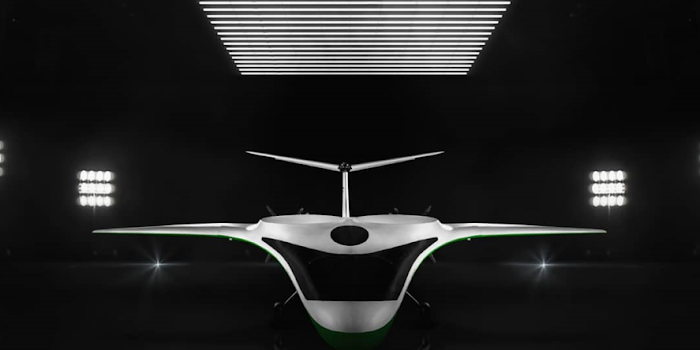Samad Aerospace completes first CTOL flight of half-scale e-Starling demonstrator.
Samad Aerospace completes first CTOL flight of half-scale e-Starling demonstrator. Credit: Samad Aerospace
A British startup Samad Aerospace plans a series of electric and hybrid VTOL air vehicles for the upcoming air mobility revolution. The company recently launched Q-Starling, a concept of a two-seater vertical takeoff and landing (VTOL) passenger plane.
And now, Samad Aerospace’s Starling Programme has celebrated a milestone with the first successful conventional takeoff and landing (CTOL) flight test of the company’s 50% scale fully electric aircraft. The successful test flight paves the path to commercializing the world’s first e-VTOL hybrid aircraft. Samad’s CEO, Dr. Seyed Mohammad Mohseni, praises his team’s resilience attributing this latest success to their “striking and unparalleled dedication during unprecedented times.”
During the CTOL flight test, the aircraft took off at a length of 250 meters, demonstrating great potential for Short takeoff and landing (STOL). Takeoff and landing were smooth, and the vehicle maintained a comfortable cruise at a speed of 90 mph (145 km/h) airborne for over five minutes.
The aircraft took off at a length of 250 meters, demonstrating a great potential for Short take-off and landing (STOL).
The aircraft took off at a length of 250 meters, demonstrating a great potential for Short take-off and landing (STOL). Credit: Samad Aerospace
“CTOL trials are an essential step towards VTOL aircraft development. Ticking off the CTOL flight capability is a crucial step towards the validation of all flight modes. With CTOL trials complete, we will begin hovering trials, and the flight trials will be concluded by a transition between hovering flight and aerodynamic flight in both directions,” explains Norman Wijker, Samad’s Chief Technical Officer.
The flight tests included evaluations on aircraft flight dynamics, performance as well as handling qualities. As the e-Starling adopts a semi blended wing body (BWB) design, it requires a low angle for takeoff; it is important to understand when the aircraft can take-off and at which speed.
The half-scale demonstrator also performed banking maneuvers in addition to tests on yaw, pitch, and roll. The results show very stable in terms of handling quality. Among other tests of subsystems were: brake, telemetry, redundancy links, and ensuring the center of gravity (CG) of the aircraft is at the correct design place.
A full-scale version of the e-Starling would be built with a range of 400 miles (644 km), a cruise speed of 300 mph (483 km/h). It will carry a maximum of seven people, including one or two pilots, depending on the regulations of different countries. The aircraft will come to the market as a hybrid-electric aircraft, but the aspiration is to be fully electric when battery technology allows. It is designed for travel within and between cities, with the air ambulance and business markets its primary targets.
Preparations for the e-VTOL flight tests are already well underway, with 2021 is set to see the completion of the 50% e-VTOL version of the e-Starling.
News Source: InceptiveMind


